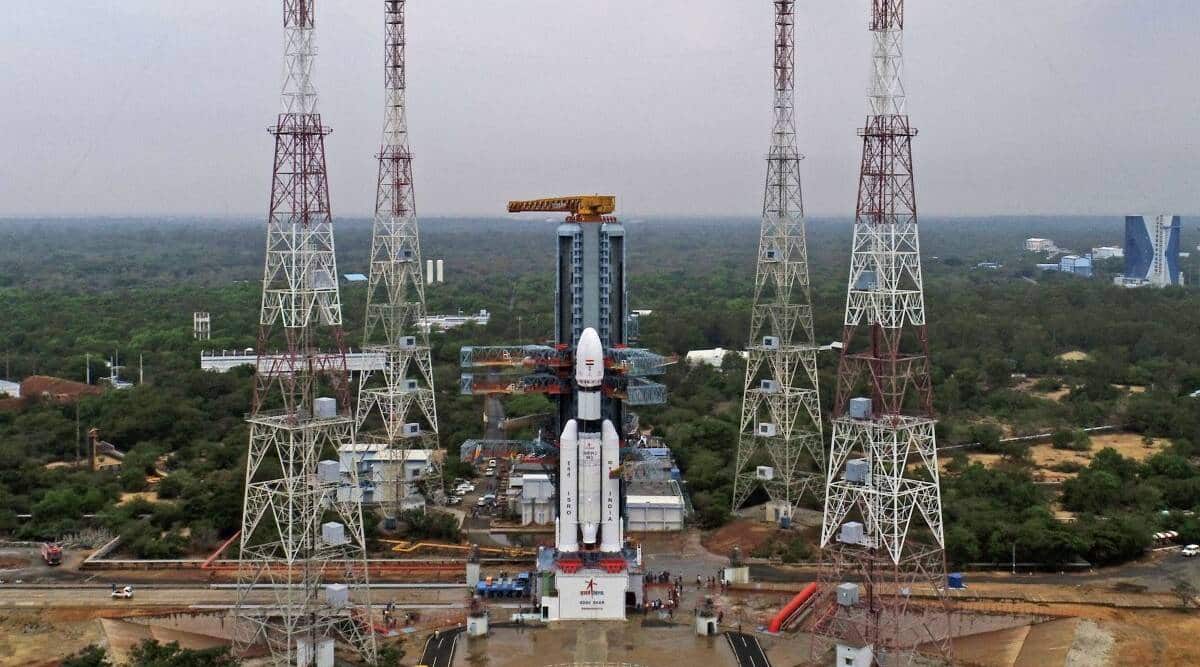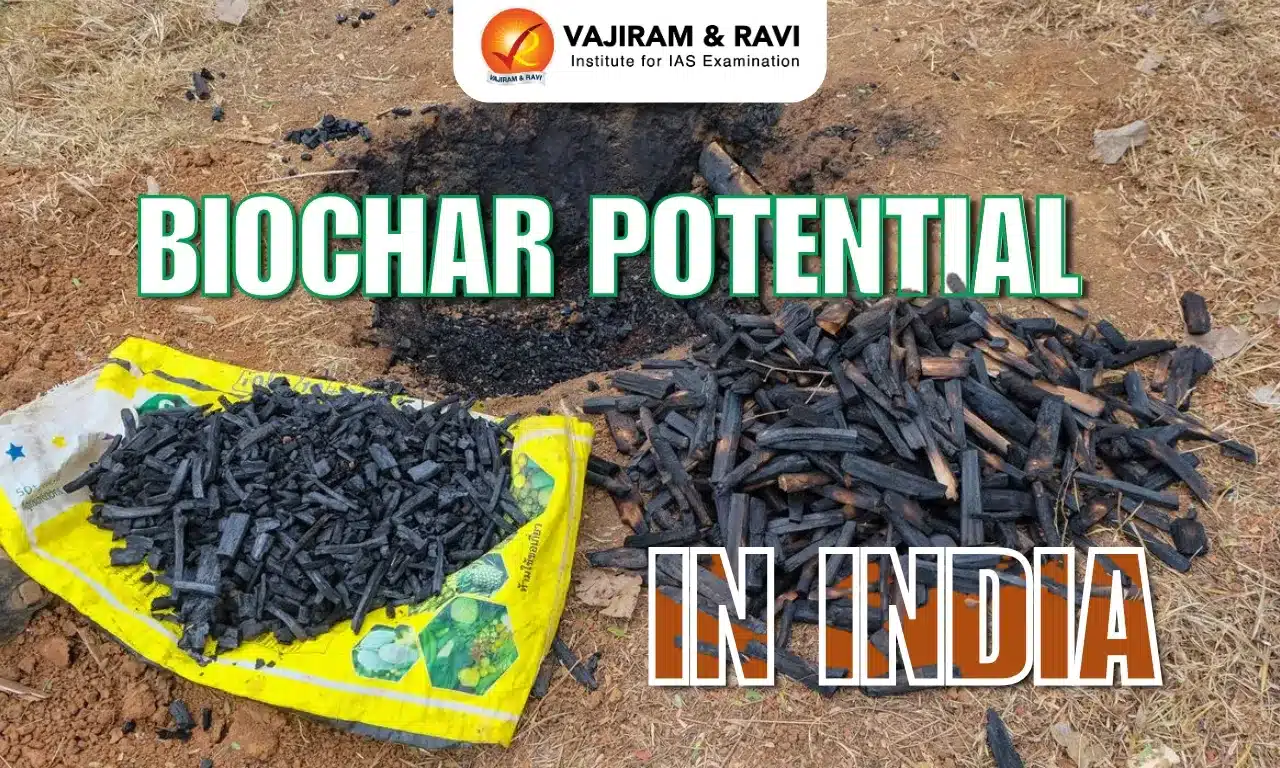What’s in today’s article?
- Why in News?
- What is the Geosynchronous Satellite Launch Vehicle (GSLV)?
- What is the GSLV MKIII?
- What Exactly is the LVM3 Mission?
- What are ISRO’s Future Endeavours?
Why in News?
- Indian Space Research Organisation’s (ISRO) GSLV-Mk3/LVM3 successfully put into space 36 satellites of Bharti-backed OneWeb enabling the completion of the UK firm’s first generation (Gen-1) Low Earth Orbit (LEO) constellation.
- The mission was the second (1st – GSAT-24) dedicated commercial satellite mission undertaken by Space PSU NewSpace India Limited (NSIL) for Network Access Associates Ltd (OneWeb).
What is the Geosynchronous Satellite Launch Vehicle (GSLV)?
- It is a (49 meters tall) is a 3-stage space launch vehicle designed, developed and operated by the ISRO to launch satellites and other space objects into Geosynchronous Transfer Orbits (GTO ~37,000 km).
- The 1st stage (S139) generates maximum thrust.
- The 2nd stage uses a liquid rocket engine which is known as Vikas engine.
- The 3rd stage uses a Cryogenic engine, which uses liquefied oxygen and hydrogen as fuel.
- GSLV has the capability to put a heavier payload (up to 5,000 kg up to 37,000 km) in orbit than the Polar Satellite Launch Vehicle (PSLV can carry up to 2000 kg into space up to 600-900 km).
- PSLV is designed mainly to deliver earth observation or remote sensing satellites, whereas GSLV has been designed for launching communication satellites.
- GSLV delivers satellites into a higher elliptical orbit – GTO.
- GSLV-D5 – launched in 2014 – was the first successful flight of the GSLV using the indigenous cryogenic engine (CE-7.5).
- The current configuration of GSLV with a CE-7.5 cryogenic engine, can put a payload of up to –
- 2500 kg in the GTO
- 5000 kg in Low Earth Orbits (LEO – altitude 2000 km or less)
What is the GSLV MKIII?
- GSLV MKIII Project was approved in 2002, with a mandate of achieving the capability to launch a 4-ton (4000 kg) class satellite to Geo-Synchronous orbit, by realizing an indigenously developed launch vehicle.
- GSLV MKIII (43.5 m height and a gross lift-off weight of 640 tonnes) is configured as a three-stage vehicle with two solid strap-on motors (S200), one liquid core stage (L110) and a high thrust CUS (configured with the fully indigenous cryogenic engine – CE20).
- Characteristics of GSLV MkIII:
- Performance capability of 4.3 ton to GTO
- Payload capability to support 10 ton to LEO missions
- Cost effective
- Improved reliability, operability and redundancy management
- Future growth potential of payload with minimal design changes
- To support manned missions (like Gaganyaan mission) of Indian Space Programme
- The maiden operational flight of GSLV MKIII has successfully launched Chandrayaan-2 spacecraft into the Super Geo-Synchronous Transfer Orbit in 2019.
What Exactly is the LVM3 Mission?
- NSIL – a central public sector enterprise (CPSE) under the Department of Space and the commercial arm of the ISRO, has signed two launch service contracts with M/s OneWeb, United Kingdom.
- OneWeb is a (Bharti group-backed) global communications network, powered from space, enabling connectivity for governments, businesses, and communities.
- As part of this contract, 36 communication satellites were placed into orbit by LVM3 – ISRO’s heaviest launcher, from Satish Dhawan Space Centre, under the OneWeb India-1 Mission.
- This is the first LVM3 dedicated commercial launch (earning the agency upwards of Rs 1,000 crore) and through this launch LVM3 is making its entry into the Global commercial launch service market.
- This is the second flight of the GSLV MKIII, since it carried India’s second lunar mission Chandrayaan-2.
- The OneWeb has set a significant benchmark for the Indian space industry in downstream application of satellite communication in India.
- It will pave the way for India to move towards benefiting from remarkable capabilities of LEO connectivity and the spread of space-based internet, bridging the digital divide in the country’s most remote areas.
What are ISRO’s Future Endeavours?
- The space agency is looking at a PSLV commercial mission, GSLV-Mk3 (for Chandrayaan-3) mission and a GSLV-Mk2 mission (for Nisar) in the coming months.
- The LVM3 mission has also given ISRO more confidence about the rocket which will be used for Gaganyaan mission (Human Spaceflight Programme).
Q1) What is Chandrayaan-3 mission?
Chandrayaan-3 is India’s third moon mission and is a follow-on mission to Chandrayaan-2 to demonstrate end-to-end capability in safe landing and roving on the lunar surface. The mission is slated to be launched later this year by Launch Vehicle Mark 3 (LMV3) from the Satish Dhawan Space Centre at Sriharikota.
Q2) What is Gaganyaan mission?
Gaganyaan project envisages demonstration of human spaceflight capability by launching a crew of 3 members to an orbit of 400 km for a 3 days mission and bring them back safely to earth, by landing in Indian sea waters.
Source: ISRO successfully launches 36 satellites, completing OneWeb constellation | IE
Last updated on July, 2025
→ UPSC Notification 2025 was released on 22nd January 2025.
→ UPSC Prelims Result 2025 is out now for the CSE held on 25 May 2025.
→ UPSC Prelims Question Paper 2025 and Unofficial Prelims Answer Key 2025 are available now.
→ UPSC Calendar 2026 is released on 15th May, 2025.
→ The UPSC Vacancy 2025 were released 1129, out of which 979 were for UPSC CSE and remaining 150 are for UPSC IFoS.
→ UPSC Mains 2025 will be conducted on 22nd August 2025.
→ UPSC Prelims 2026 will be conducted on 24th May, 2026 & UPSC Mains 2026 will be conducted on 21st August 2026.
→ The UPSC Selection Process is of 3 stages-Prelims, Mains and Interview.
→ UPSC Result 2024 is released with latest UPSC Marksheet 2024. Check Now!
→ UPSC Toppers List 2024 is released now. Shakti Dubey is UPSC AIR 1 2024 Topper.
→ Also check Best IAS Coaching in Delhi















